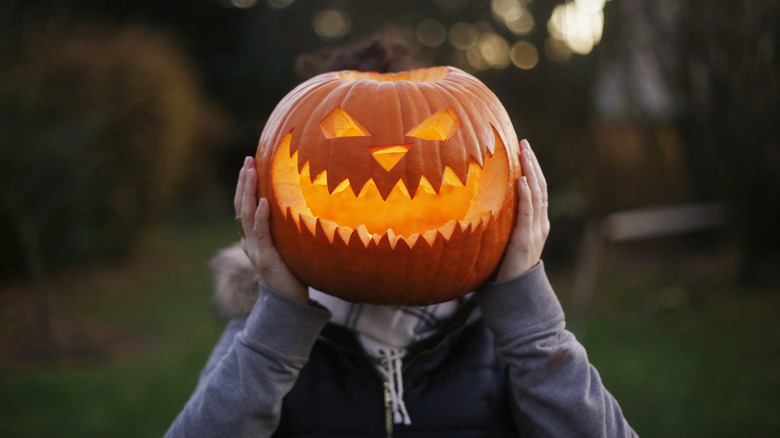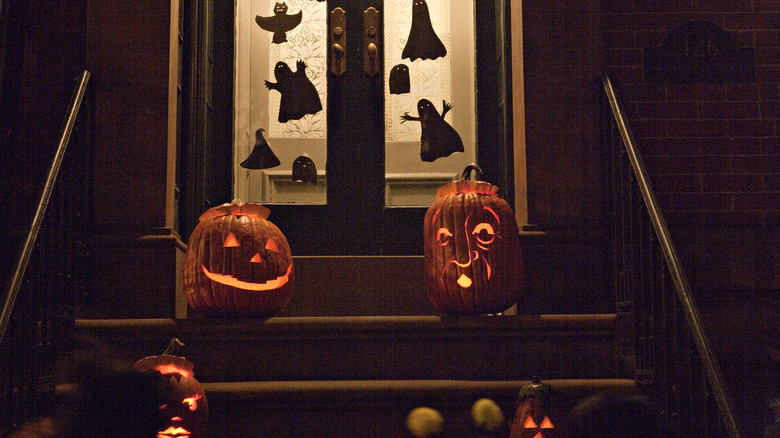Jack-O-Lanterns Didn't Start Out As Pumpkins
September marks the beginning of the spooky season for everyone who celebrates Halloween with feverish intensity. Never mind that it's still technically summer, once the calendar flips away from August, you can start getting out your orange and black decorations — including pumpkins and jack-o-lanterns. A ubiquitous symbol of Halloween in modern times, the jack-o-lantern today is carved out of pumpkins (which are forever associated with fall and can be cooked into some novel dishes) — but that wasn't always the case.
Tracing the history of jack-o-lanterns involves crossing the Atlantic and going back in time roughly 400 years, when Celtic cultures, namely the Irish, actually carved their jack-o-lanterns out of — are you ready for this? — turnips, as well as beets and other root vegetables (pumpkins not being native to Europe). They did this to ward off evil spirits at a time when the veil between the living and the dead was considered to be at its thinnest. This time is referred to as Samhain, which falls on November 1, but, in contemporary American culture, has turned into Halloween, which occurs the night before.
A brief history of jack-o-lanterns
As mentioned, the history of jack-o-lanterns begins with Irish culture, and a story dating from the 16th century, featuring a man called Stingy Jack. Stingy Jack, so the legend goes, invited the Devil to share a drink, but didn't want to pay for the beverages imbibed. He tricked the devil into turning himself into a coin, but then Jack kept the coin in his pocket and only let the devil return to his previous form by exacting a few promises that the devil would leave him alone for a while.
Jack actually tricked the devil a second time, so when he died, the devil didn't claim Jack's soul for Hell. Unfortunately, God also decided he couldn't let such a wily trickster into Heaven. So, the devil gave Jack an ember of burning coal and cursed him to wander in darkness for all eternity. Jack placed his coal into a turnip with holes carved into it and used it as a lantern to light his way.
This lost soul was known as "Jack of the Lantern," which was shortened to jack-o-lantern. The Celts would carve out their root vegetables into grotesque faces, and put them in their doorways during Samhain to scare off Jack. This tradition then passed from the Irish to the Scots, and from the Scots to the English, before making its way to the American colonies. Pumpkins replaced turnips when people discovered they were much softer and easier to carve, and the tradition has become a favorite for all Americans who celebrate Halloween.

